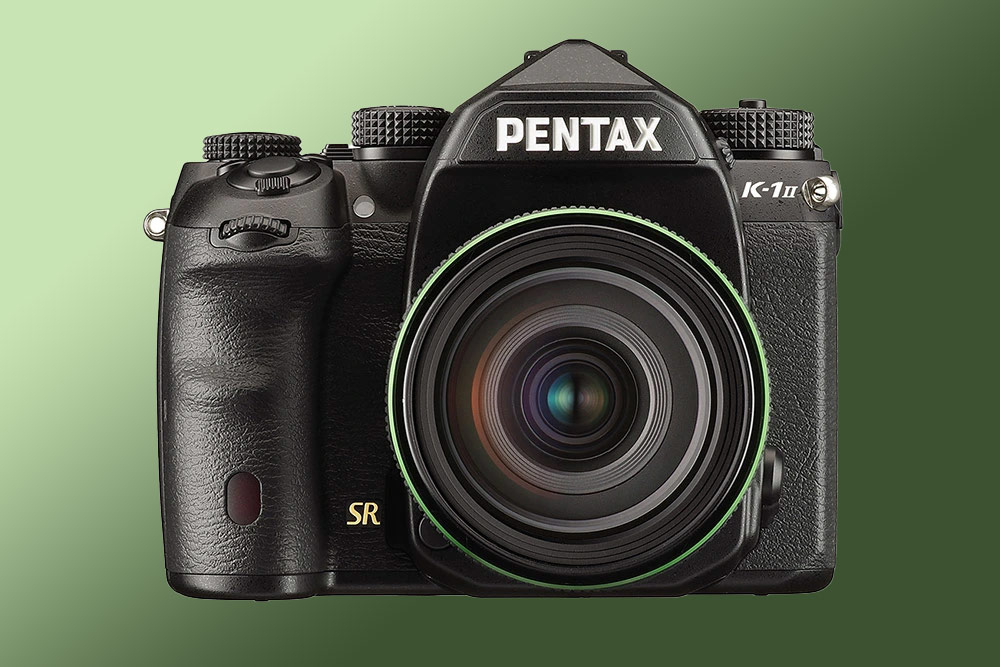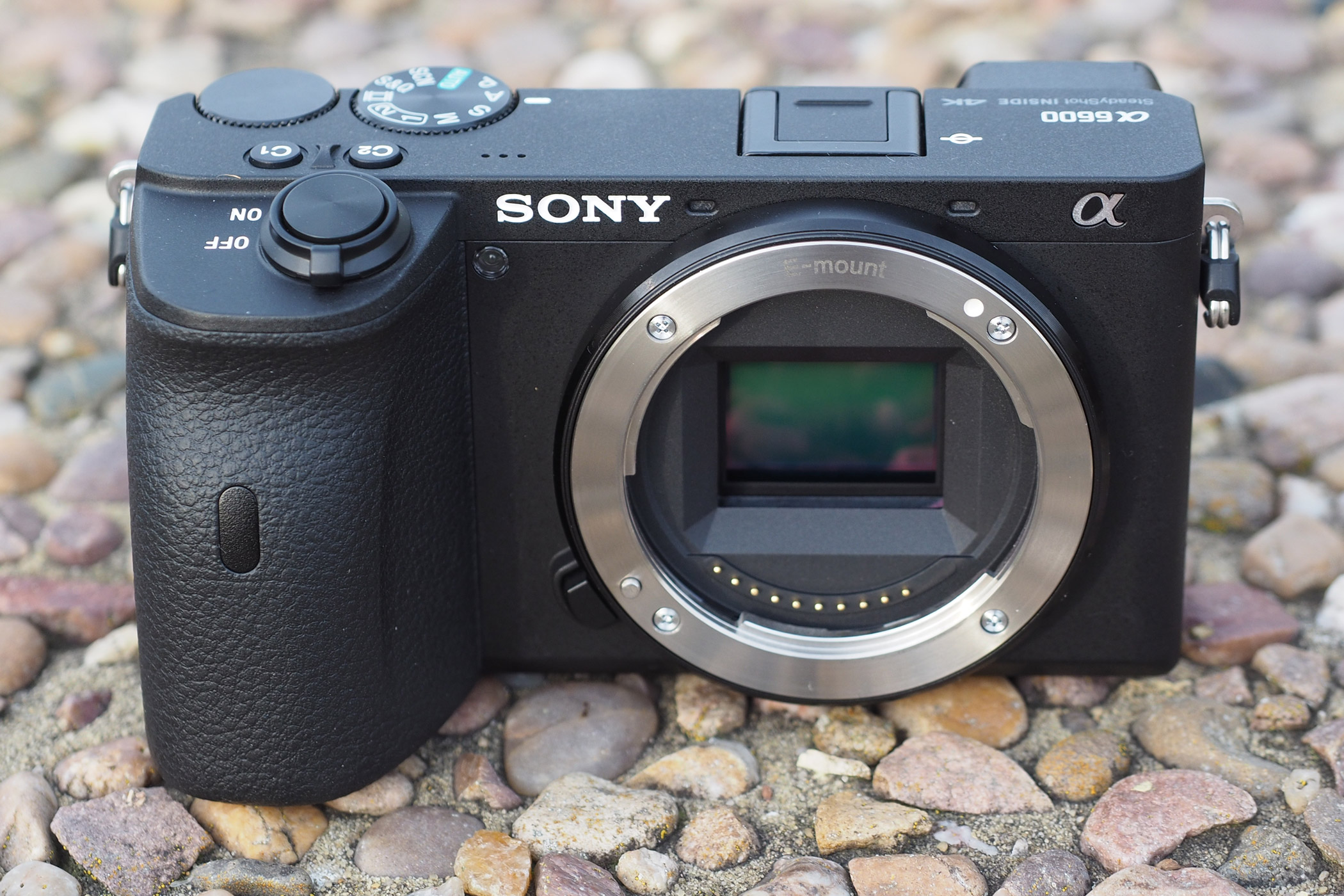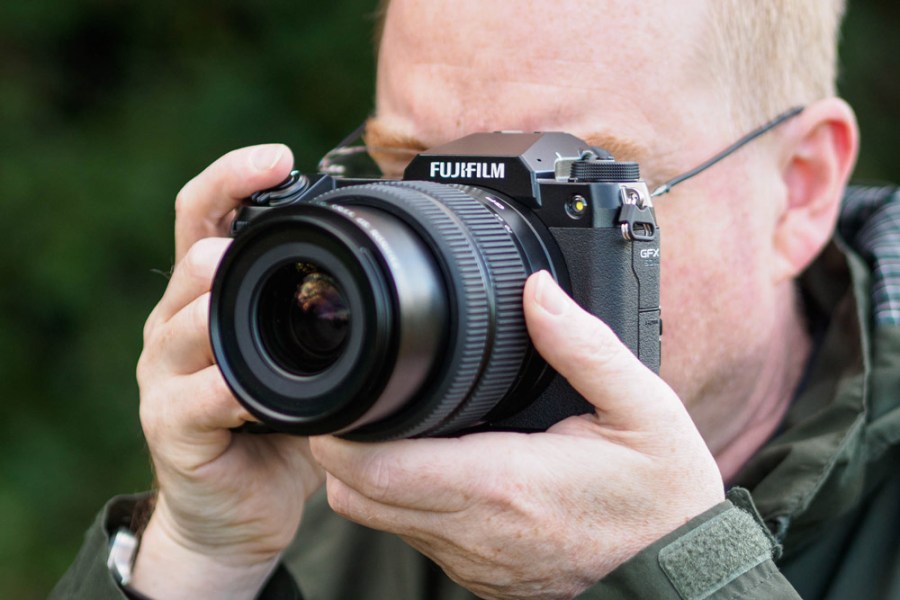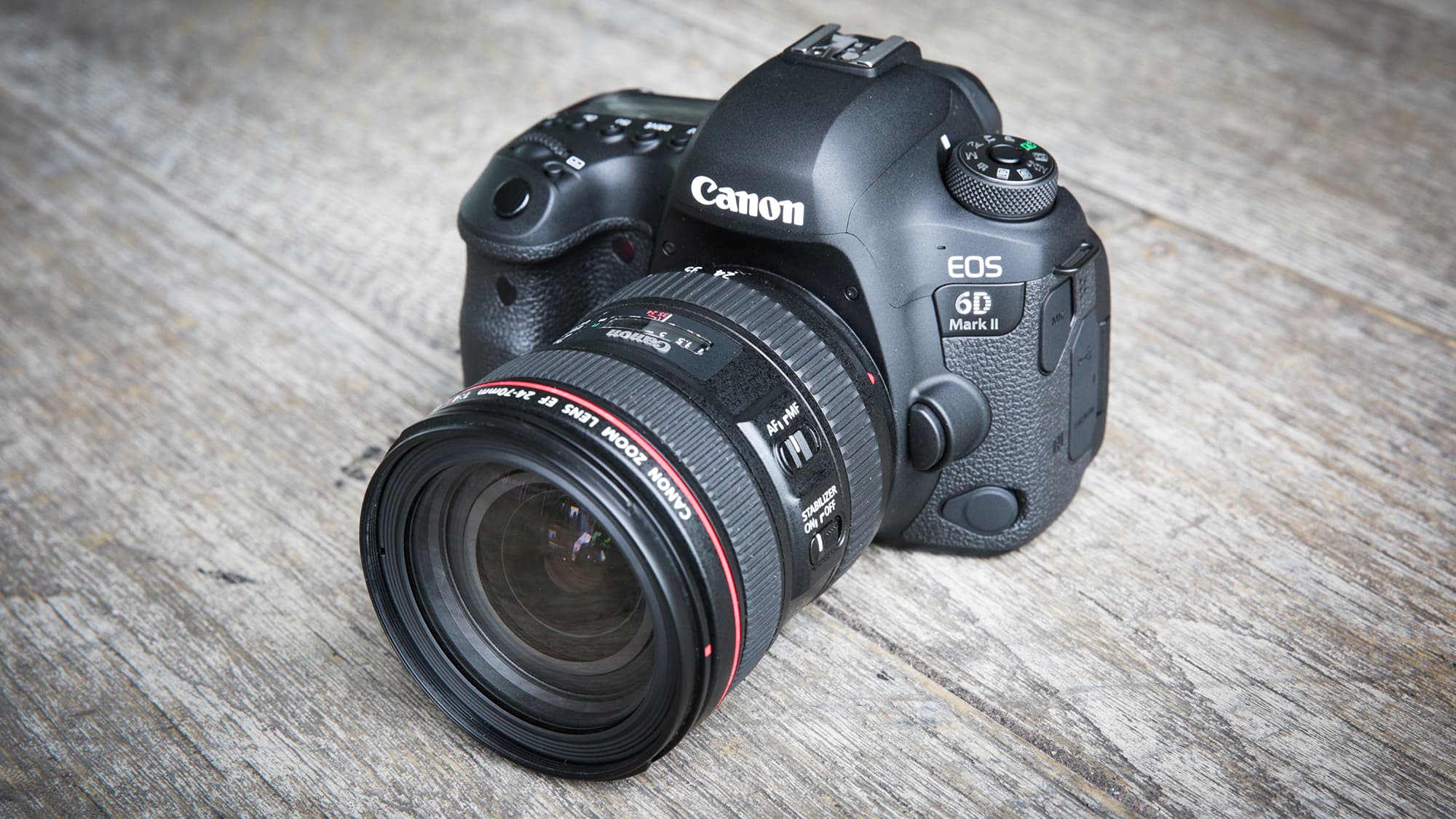If you’re looking for the best cameras for photography under $2000/£2000, you’re in luck. This is a sweet-spot of a budget, enough to get you an absolutely outstanding enthusiast’s camera, or even a professional model if you don’t mind something a generation or two old. We’ve scoured the internet to bring you what we reckon are the best sub-2K cameras across all the major manufacturers. The resulting list is a mix of new and old cameras, including some that can be bought second-hand.
We’ve tested and reviewed the products on this list, and in order to earn a spot, a camera needs to have impressed us. This budget isn’t a small amount of money, after all, and if you’re going to spend up to $2,000 / £2,000 on a camera, it should deliver some pretty impressive image potential. Some of the cameras on our list come in well under budget, leaving you room to pick up some lenses, while others push up right to the limit.
If your budget is a little lower than this, check out our guides to the best cameras available for under $1000/£1000 and the best cameras under $500/£500. Alternatively, if you need to save even more, we also have guides to the best cameras under $300/£300 and the best cameras under $200/£200.
Best cameras under $2000 / £2000 – quick list
Looking for the best deal on cameras under $2,000/£2,000? Not only will you find the best affordable cameras, but also some of the best camera deals, as our ‘Buy now’ buttons are set to automatically take you to the best prices, from trusted retailers. You’ll also find a list of other retailers below each camera, so you can find the right deal for you.
- Best for DSLR users: Canon EOS 6D Mark II – Buy now
- Best for beginner wildlife photography: Canon EOS R7 – Buy now
- Best for landscapes: Fujifilm X-H2 – Buy now
- Best for ultra-high resolution shooting: Fujifilm GFX 50S – Buy now
- Best for travel photography: Nikon Z6 II – Buy now
- Best for speed shooting: OM System OM-1 Mark II – Buy now
- Best for video and filmmaking: Panasonic Lumix GH5 II – Buy now
- Best for hybrid shooters: Panasonic Lumix S5 II – Buy now
- Best for outdoor shooting: Pentax K-1 Mark II – Buy now
- Best for sports and action on a budget: Sony A6600 – Buy now
Our guide includes cameras that are available in the US and the UK, with $2000 / £2000 as our rough guide. Bear in mind that prices and exchange rates do fluctuate in both territories and while we keep this guide regularly up to date, sometimes a camera will nudge over the $2000 / £2000 mark in one territory or another. In general, it won’t be too significant.
Why you can trust Amateur Photographer
We spend many hours testing every product we recommend, in detail, in a variety of situations and shooting scenarios, and only use experts for our reviews, so you can be sure that you’re getting the best products. Find out more about our expert writers.
Best DSLR
Best cameras under $2000 / £2000 for DSLR users: Canon EOS 6D Mark II
Amateur Photographer verdict
A notable improvement on its predecessor, the Canon EOS 6D Mark II is a great stepping stone to get into full-frame photography- Weather-proofed, well-built body
- Performs well at higher ISO settings
- Dual Pixel AF
- Limited working AF area
- Low-light AF could be better (except in centre)
- Only 6.5fps burst, and 4.5fps in Live View
At a glance
- Full-frame 26MP sensor
- Dual Pixel AF for stills and video
- 6.5 fps continuous shooting
- Articulating 3in touch monitor
- Price: $1,199 / £899 body-only
While Canon has been working hard on moving its mirrorless offerings forward, it still has a strong hand in DSLRs and if you want to go full-frame in a cost-effective way the Canon EOS 6D Mark II could be for you. It’s a well-made camera with a healthy list of features to appeal to the keen photographer and its price puts it well under our $2000 / £2000 ceiling, so the rest of the budget can be set aside to buy a lens or two.
Resolution is good at 26MP and high ISO performance compares well with rivals. Viewfinder AF is handled by a 45 point all cross-type sensor, but these points are centrally based so dealing with off-centre subjects needs you to focus lock and reframe which is not so convenient.
The EOS 6D Mark II is a perfectly capable and usable DSLR with a great deal going for it, but it faces tough competition from comparable mirrorless models.
Read our Canon EOS 6D Mark II review
Best for beginner wildlife
Best camera under $2,000 / £2,000 for beginner wildlife photography: Canon EOS R7

Amateur Photographer verdict
The R7 is an appealing camera for both stills and video.- Portable high-resolution shooting
- Very capable AF system
- 7EV benefit in-body image stabiliser
- Electronic shutter suffers from rolling shutter
- Digital noise at higher ISO speeds
- New rear control wheel won’t appeal to everyone
At a glance
- 32.5MP APS-C sensor
- Dual Pixel CMOS AF II
- Up to 30 fps burst with electronic shutter
- Dual SD card slots
- Price: $1,299 / £1,180
Earlier this year, Canon introduced its first two APS-C format cameras using the RF full-frame lens mount, the EOS R10 and EOS R7. This means you can use full-frame RF lenses although they are bulky by comparison, and so far Canon has introduced just two native RF-S lenses, an 18-45mm f/4.5-6.3 IS STM and an 18-150mm f/3.5-6.3 IS STM.
However, the ability to fit full-frame lenses on the EOS R7, with the benefit APS-C format 1.6x crop factor, has made it popular among nature photographers. Another key attraction of the EOS R7 is its AF system which features technology cascaded down from the EOS R3 flagship with deep learning AI and the ability to recognise people, animals and people.
Stocks are limited currently so if this is your dream sub-£2000 budget camera, keep an eye out and be ready to pounce with an order when you see it available.
Read our Canon EOS R7 Review
Best for landacapes
Best camera under $2,000 / £2,000 for landscapes: Fujifilm X-H2

Amateur Photographer verdict
With 8K video recording available, this is a high quality camera for terrific value- 40MP high resolution sensor
- Pixel Shift High Resolution mode
- Advanced video features
- Sophisticated hybrid AF with subject detection
- Top-plate layout not as user friendly as X-T models
- Battery life could be better
At a glance
- 40.2MP APS-C sensor
- Pixel Shift High Res mode
- 15 fps full-format shooting rate
- Dual card slots – SD and CFexpress Type B
- Price: $1,999 / £1,680
Fujifilm’s X-H2 is one of the highest-resolution APS-C format camera ever launched, sitting alongside its sister in the X-series, the Fujifilm X-T5. The X-H2 is home to Fujifilm’s fifth generation X-Trans CMOS sensor that boasts 40.2MP, and it brought a fair few exciting innovations to the table, being the first X System camera with a high resolution pixel-shift mode. Mount the camera to a tripod and it can take 20 shots in quick succession, and when the Raws are merged on the computer, this results in 160MP files.
Other key attractions include 15 fps shooting with the mechanical shutter, 20 fps with the electronic shutter in 1.29x cropped mode, 5.76m dot EVF, seven custom modes, great customisation potential and an incredible top shutter speed of 1/180,000sec with its electronic shutter. The X-H2 also offers much more for the video user than the X-T5, with internal ProRes recording and the capacity to output 12-bit RAW video via HDMI.
Read our full Fujifilm X-H2 review.
Best for high-res
Best camera under $2,000 / £2,000 for ultra-high resolution shooting: Fujifilm GFX 50S

Amateur Photographer verdict
The GFX 50S excels in image quality and is a robust medium-format option- Superb image quality
- Lovely to use
- High resolution
- Size of the body and lenses
- Limited lens range and cost
- Suffers from rolling shutter with electronic shutter
At a glance
- Medium-format 51.4MP sensor
- 3.2in tilting touchscreen
- ISO 100-12,800
- 3.69m dot EVF
- Dual SD card slots
- Price: approx $1,900 / £1,450 used, body-only
Going digital medium-format is a serious commitment but it is possible with the $2000/£2000 budget if you shop for a used model. Pre-owned Fujifilm GFX 50S and the GFX 50R cameras are both available within our $2000 / £2000 budget. They share the same 44x33mm 51.4MP sensor but have different design concepts. The GFX 50R seems to have all but dried up from the second-hand market for the time being, but the GFX 50S is still pretty plentifully available.
Where the GFX 50S really excels is in image quality and its Raw files are super rich in detail, and have wide dynamic range so offer great potential for contrast adjustment in post. The camera body itself isn’t too large, but it’s dust- and weather-sealed, making the GFX 50S a truly practical outdoor camera. For landscape shooters who want the ultimate in detail and can’t live without that distinctive medium-format ‘look’, the GFX 50S is an outstanding choice, and you can get it on the used market for less than you’d pay for a lot of new full-frame cameras.
Read our Fujifilm GFX 50S review.
Best for travel
Best camera under $2,000 / £2,000 for travel photography: Nikon Z6 II

Amateur Photographer verdict
A solid all rounder mirrorless with impressive autofocus. It is a good choice if you are thinking of upgrading from a DSLR.- Great all-rounder
- Weatherproofing
- Large viewfinder
- Dual SD card slots
- Impressive low-light performance
- 4K video is cropped
- Lacks full screen articulation
At a glance
- 24.5MP BSI-CMOS full frame sensor
- ISO 50 – 204,800 (extended)
- 14fps continuous shooting
- 3.69m-dot EVF, 0.8x magnification
- 3.2in tilting touchscreen
- 5-axis in-body stabilisation
- Price: $1,400 / £1,200
It might be an entry-level full-frame mirrorless camera but it’s not short of great features and will easily satisfy most demanding users. The Nikon Z6 II is a solid all-rounder – great for landscapes, wildlife, portraits and more. With its improved AF, the Z6 II will be a competent camera for sports and wildlife fans. At the Z6 II’s heart is a 24.5MP full-frame sensor capable of detail-rich pictures with low digital noise even at high ISO speeds. Its native range tops out at ISO 51,200 so you can tackle the grimmest lighting with decent results. Plus, you get help from the five-axis IBIS system with a claimed 6EV benefit.
Autofocus is handled by a system of 273 points that cover virtually the whole image area and with powerful eye-detect AF, the Z6 II will quickly and precisely latch onto your people subjects regardless of where they are in the frame. Whether as a main body or as a back-up the Z6 II is a great value full-frame camera. The Nikon Z6 II comes in well under our budget price, leaving you room to pick up a couple of fantastic Nikon Z-mount lenses.
Read our Nikon Z6II review.
Best for speed
Best camera under $2,000 / £2,000 for speed shooting: OM SYSTEM OM-1 Mark II

Amateur Photographer verdict
The OM System OM-1 Mark II is a subtle evolution of the OM-1, which is already an impressive high-speed camera. This Mark II is even better – and graduated Live ND is a unique feature!- Graduated Live ND
- Impressive buffering speed and IBIS
- 120/50fps continuous shooting
- Weather sealed
- 4K 120fps would be nice
- Video
At a glance
- 20MP Micro Four Thirds sensor
- 50fps with C-AF, 120fps fixed AF with extended buffer
- 5.76m-dot EVF
- 5-axis in-body stabilisation
- Dust and splash-proof build
- Price: from $1,999 / £1,900
The OM-1 was the first camera from the OM SYSTEM brand, the business that purchased the Olympus Cameras in 2021. It was without a doubt a seriously capable and impressive picture-taking machine with rich features. But the OM-1 Mark II is a truly worthy successor, with features like the World’s first in-camera Live Graduated ND filter, doubled buffer size, it is one of the fastest cameras on the market not to mention the overall improvements to the autofocus, stabilisation and handling, this camera is a joy to use.
Its sensor is a 20MP stacked BSI unit and has 80 million individual photodiodes to give a super-fast readout, fast enough to enable a Handheld High Resolution mode which captures a dozen images to give 50MP in-camera Raws. Put the OM-1 II on a tripod, engage High Resolution mode and you get 80MP files.
But we are getting ahead of ourselves because high-resolution shooting is just a small facet of a multi-talented camera. The OM-1 II body is weather-sealed and houses an 8EV benefit 5-axis in-body image stabilisation system, it uses highly improved 1053-point AI detect Quad Pixel autofocus, with added human detection. Unlike its predecessor, the OM-1 Mark II now has the subject detection settings conveniently placed in the Super Control Panel for easy access this way you can pick between eight dedicated subject detection modes at your fingertips.
It shoots hi-res multi-shot in 14-bit RAW at 120 fps and at 50 fps you get AE/AF tracking with certain lenses.
All told, the OM-1 Mark II is a stunning flagship with massive potential for almost every photo genre and just around the £2000 ceiling too.
Read our OM System ‘Olympus’ OM-1 Mark II Review.
Best for video
Best camera under $2,000 / £2,000 for video and filmmaking: Panasonic Lumix GH5 II

Amateur Photographer verdict
Improvements in the GH5 II bring it in line with many of the features and functionality that hybrid shooters will expect from their main camera- Impressive video features and quality
- USB charging
- IBIS works really well for stills and video
- AF in video can’t always be relied on
At a glance
- 20MP Micro Four Thirds sensor
- 3.69m dot EVF, 3in touch screen
- IBIS with 6.5EV benefit
- UHD or DCI 4K 10-bit video
- Price: $1,198 / £979
The video-centric Lumix GH5 proved very popular among content creators so the GH5 II had big boots to fill, but it has done very well in this respect even though the refresh isn’t that extensive. Key changes on the GH5 II include a more powerful image processor that offers more focusing sophistication with face/eye/body and animal recognition. Its IBIS system has also been given a lift with the GH5 Mark II delivering up to 6.5EV benefit compared with the 5EV of the original model. And of course, its video skills have been upgraded with 10-bit DCI/UHD 4K 50p/60p, V-Log support, live streaming options and the ability to shoot upright format footage.
Image quality is very good in stills and 4K video. In stills the GH5 II turns in a good showing at its higher ISO speeds and JPEG output is sound too. For a more comprehensive update, and if you don’t mind paying a little more, Panasonic has also released the impressive Lumix GH6.
Read our Panasonic Lumix GH5 II review.
Best for hybrid shooters
Best camera under $2,000 / £2,000 for hybrid photo and video shooters: Panasonic Lumix S5 II

Amateur Photographer verdict
The Lumix S5 II is a delight to use with really helpful menu innovations, controls and features. With great video too, these are great achievements in a compact camera- 30fps burst rate with electronic shutter
- Unlimited video recording times
- 779-point phase-detection autofocus system
- No CFExpress slot
At a glance
- Full-frame 24.2MP sensor
- ISO 100-51,200 (standard)
- C4K 60p video recording
- 779-point phase detection autofocus
- Accepts L-Mount lenses
- Price: $1,700 / £1,600 body only
With more and more content creators flexibly shooting both stills and video, cameras are increasingly being designed to be jacks of both trades. One of the most accomplished in this regard is Panasonic’s sublime Lumix S5 II, announced at the start of 2023 and released shortly afterwards. After years of waiting, it’s the Panasonic camera that finally gave users and reviewers what they were crying out for: phase detection autofocus. That’s right, Panasonic is no longer stubbornly sticking with that aging contrast-detect Depth from Defocus autofocus system, and the Lumix S5 II is all the better for it.
The Lumix S5 II impresses in a lot of other areas too. Thanks to a cooling fan above its sensor it can deliver unlimited video recording times without overheating, and it shoots 4K video at up to 60p, in 4:2:2 10-bit colour, or you can push it up to 6K 30p. Stills-wise, the Lumix S5 II delivers gorgeous full-frame images at a resolution of 24.2MP, with a broad ISO range and impressively snappy burst modes. It’s basically a camera that can turn its hand to anything, and the best part is, it just about slips into our £2,000 / $2,000 budget.
Read our Panasonic Lumix S5 II review.
Best for outdoor
Best camera under $2,000 / £2,000 for outdoor shooting: Pentax K-1 Mark II

Amateur Photographer verdict
A DSLR that delivers fine results. Its 5-axis image stabilisation and Dynamic Pixel Shift mode allows for better imaging and noise performance- Impressive 14-bit Raw quality
- Tilt monitor with innovative structure
- 5EV benefit shake reduction
- Video limited to Full HD and HD
- Slow burst shooting rate
At a glance
- Full-frame 36.4MP sensor
- Maximum ISO 819,200
- Five axis 5EV benefit shake reduction
- Dynamic Pixel Shift mode
- Weather-sealed body
- Price: $1,600 / £1,899
Pentax is not the force that it once was in the camera world and that’s pity because the K-1 Mark II shows what the brand can achieve and it’s a camera that’s great to use. It delivers fine results. This DSLR is based around a very good full-frame 36.4MP CMOS sensor which is optical low pass filter-free for the best possible resolution.
The K1 Mark II sports a five axis sensor shift image stabiliser that brings with it the option of Dynamic Pixel Shift Resolution designed to allow handheld shooting that merges four images for better imaging and digital noise performance.
While the Pentax K-1 Mark II is a capable DSLR and has some excellent features including a rugged flexible monitor, 33-point AF, twin SD card slots and a very wide ISO range.
Best for sports
Best camera under $2,000 / £2,000 for sports and action on a budget: Sony A6600

Amateur Photographer verdict
Small, fast, weather-sealed, and includes in-body stabilisation. Its autofocus capability is unreal and it delivers great image quality in raw.- Excellent AF with eye detect for humans and animals
- Five axis IBIS
- Impressive image quality even at high ISO speeds
- Good battery life
- One SD UHS-I slot
- Handling is not as slick as rivals
At a glance
- 24.2MP APS-C sensor
- 11 fps with AE/AF tracking
- Five-axis IBIS with 5EV benefit
- 4K video
- Tilting touchscreen
- Price: $1,000 / £830
The Alpha 6600 sits at the top of Sony’s APS-C range and it sports a long list of class leading features. Its 24.2MP APS-C sensor works with the Bionz X processor for a low digital noise performance at its 100-32,000 native ISO range – this is expandable to ISO 50 and 102,400.
It’s in autofocusing where the A6600 really impresses though. Over 80% of the image frame is covered by 425 phase-detect and 425 contrast-detection focus points giving a 0.02sec subject acquisition speed. Subject tracking is handled by AI based recognition algorithms that process colour, brightness and distance data very, very rapidly for real-time eye detect AF for human and animal subjects.
All this technology and picture-taking prowess comes in a portable package supported by a huge selection of lenses from Sony and third party brands.
Read our full Sony Alpha A6600 review.
How to choose the best camera under $2000 / £2000
If you’re picking in this category, you’re realistically going to be choosing between a DSLR or a mirrorless camera, and there are pros and cons to each camera type. Many photographers prefer the DSLR for the connection with the subject that an optical viewfinder provides and their handling characteristics, but it’s with mirrorless where huge investment has gone in recent years. Their electronic viewfinders (EVFs) might not have the purity of view that DSLRs give but the latest variants have very high-resolution finders that have an optical ‘feel’. And of course, being able to see a live preview of the shot before you press the shutter button is a huge bonus.
The other big consideration is sensor size. A budget of $2,000 / £2,000 is enough to get you a full-frame camera, which is the professional standard sensor size and will ensure you can capture images of outstanding depth and quality. However, opting for a camera with a smaller sensor like APS-C or Micro Four Thirds may well mean you can get a newer model and still stay within budget, meaning you’re more likely to get up-to-date features like subject-detection autofocus.
There’s a lot more to say on both these subjects, so you can find out more about different camera types here and also take a look at our guide to APS-C, Full-Frame, and Micro Four Thirds sensors.
Buying second-hand
For great second-hand prices, check out our list of recommended used kit dealers:
- Wex Photo Video
- Park Cameras
- MPB
- Clifton Cameras
- Ffordes Photographic
- London Camera Exchange
- CameraWorld
- Worldwide Camera Exchange
- Mifsuds Photographic
- Grays of Westminster (Nikon only)
- KEH (USA)
- B&H Photo Video (USA)
- Adorama (USA)
How we test cameras
We test cameras primarily by using them to take photographs and video in a wide range of real-world situations. We evaluate their control layouts and handling, and the usability of their viewfinders and screens. We assess their autofocus across a range of different subjects and shooting scenarios and check their continuous shooting capabilities.
We also examine the effectiveness of their image stabilisation systems. Last but by no means least, we critically evaluate the image quality, in both JPEG and raw, including resolution, high-ISO noise, and dynamic range. We then take all these factors into account, along with such things as portability and lens systems, when giving our final conclusion and score.
Have a look at more of our buying guides, and latest reviews.
Text by Will Cheung, with contributions from Jon Stapley.








